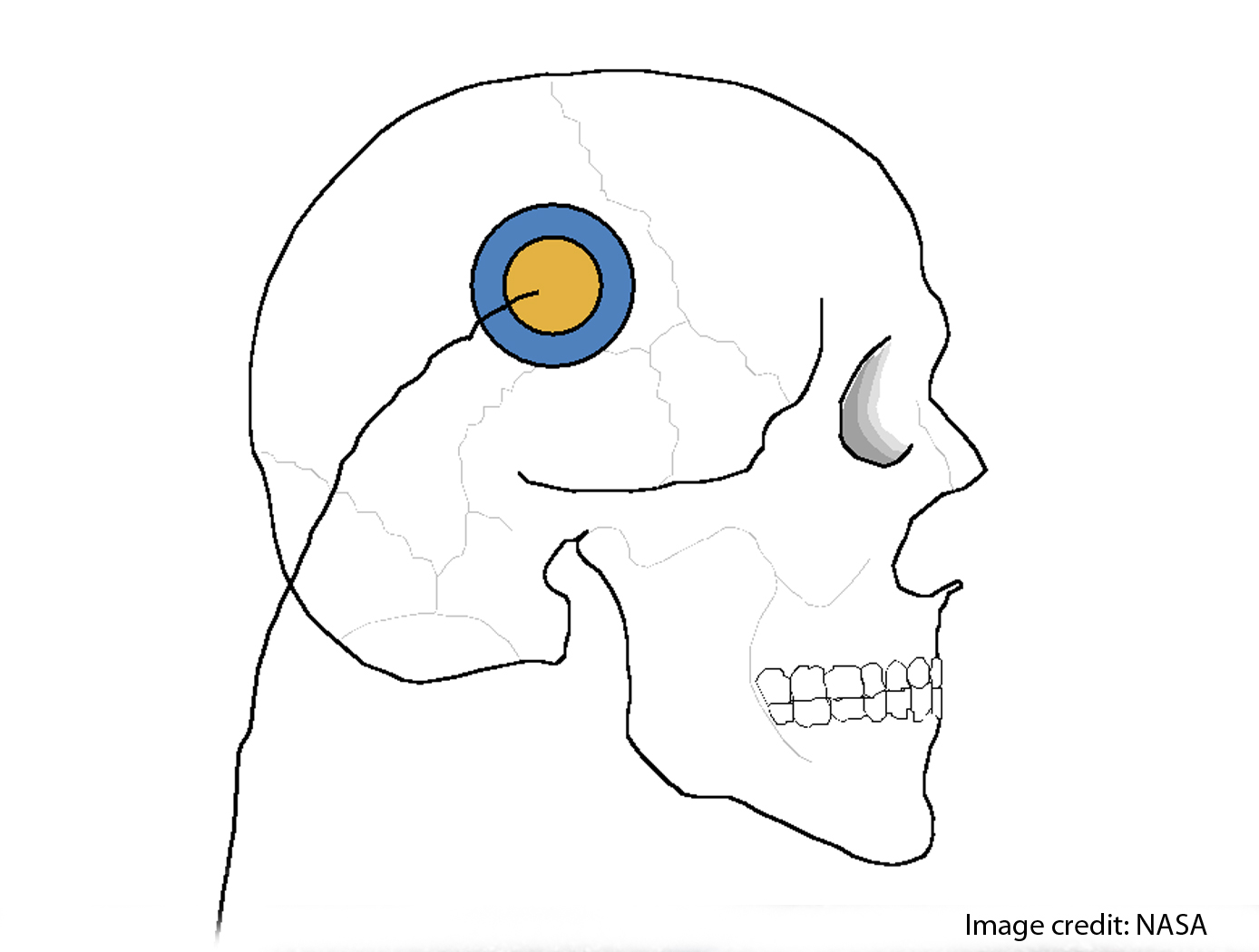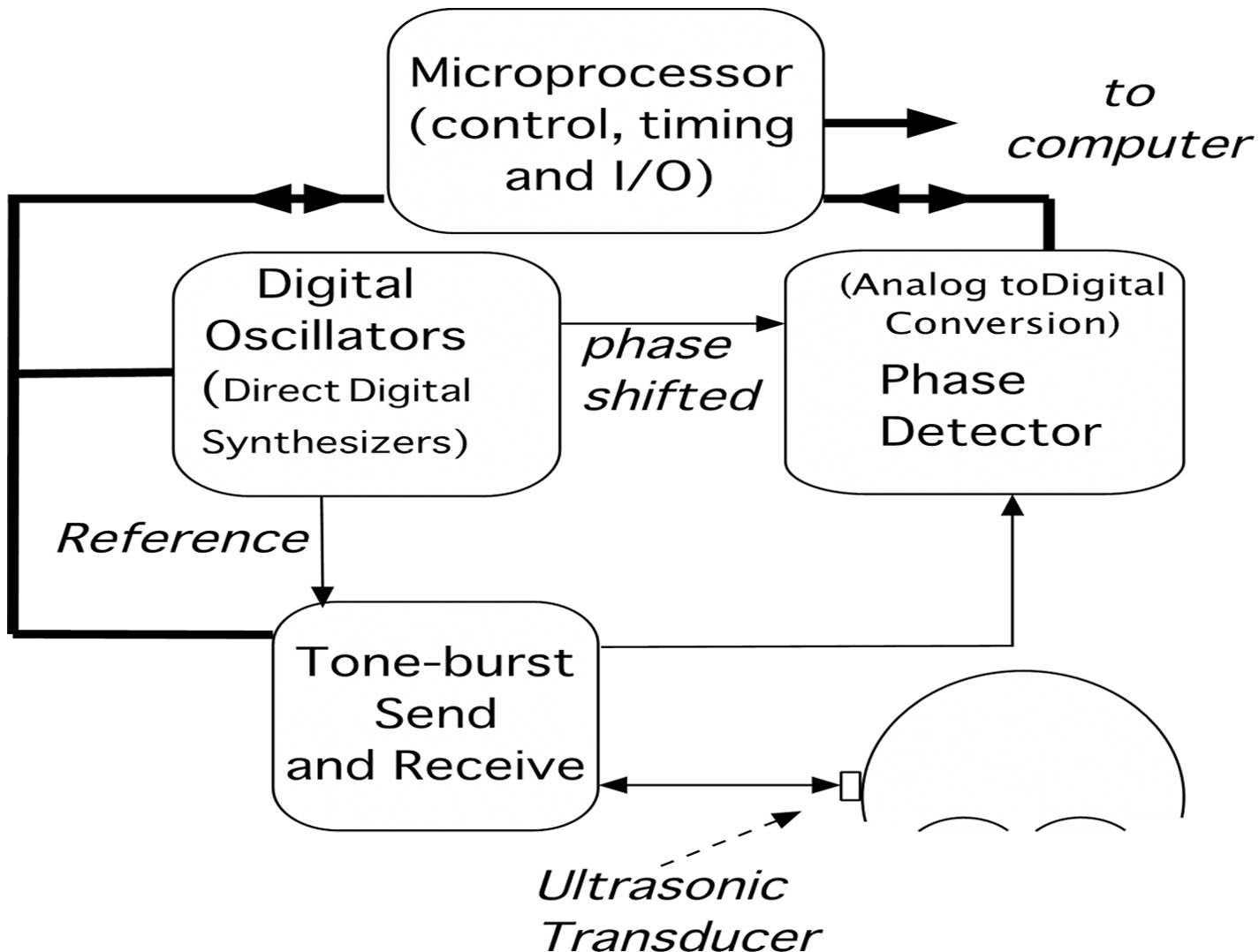Non-invasive Intracranial Pressure Measurement
health medicine and biotechnology
Non-invasive Intracranial Pressure Measurement (LAR-TOPS-248)
Constant frequency pulsed phase-locked loop technology as the means for measuring transcranial expansion
Overview
An acknowledged objective of critical care medicine is a timely, accurate, readily deployable, cost-effective and, importantly, safe means of assessing and/or monitoring critical aspects/parameters of patient condition such as intracranial pressure. However, ICP monitoring is complicated by a large set of variables related to the patients themselves -- presented symptoms, circumstances, and related information indicating such measurement; and relevant accompanying issues. These conditions and the various combinations thereof present attending physicians with the choice of many alternatives regarding key parameters, including but not limited to urgency, availability, appropriability, and accuracy to a minimum standard. Cost, complexity, ease of use and other issues are also meaningful factors, but the bottom line for any of the various technical approaches, whether invasive or non-invasive, is performance. Key to this technology is its capability to correlate closely with established tympanic membrane displacement (TMD) ICP monitoring technology.
The Technology
This technology and a product based on it offer new analytical capabilities for assessment of intracranial dynamics. It offers the possibility for the monitoring of transcranial expansion and related physiological phenomena in humans resulting from variations in intracranial pressure (ICP) caused by injuries to the head and/or brain pathologies. The technology uses constant frequency pulse phase-locked loop (CFPPLL) technology to measure skull expansion caused by pressure and its variations in time. This approach yields a more accurate, more robust measurement capability with improved bandwidth that allows new analytical approaches for assessing the physiology of skull expansion under pulsatile cerebral blood flow. The dynamical quantities assessable with the CFPPLL include skull volume expansion and total fluid. Such an instrument can serve to measure intracranial dynamics with equation based algorithms, and offers a path to measure or determine quasistatic intracranial pressure, along with the pulsatile related intracranial pressure increments. Supportive measurements, such as time dependence of arterial pressure waveforms together with time dependent phase change of transcranial expansions can serve as the basis of noninvasive techniques to measure intracranial pressure.


Benefits
- Based on known and well understood principles, yielding data that demonstrate close correlation with a known non-invasive ICP monitoring technology, tympanic membrane displacement
- Implementation of the technology would be straightforward and of low impact to the patient in a clinical setting
Applications
- Application of the technology to limited and narrowly defined settings, such as on board emergency vehicles responding to medical emergencies and other medical triage situations outside of medical facilities, may present opportunities such as specific application subsets of ICP monitoring, as in remote, non-medical facilities and in emergency/triage facilities and/or equipment (e.g., battlefield settings, ambulances/EMS vehicles, etc.) in which the products likely low cost, small footprint and ease of use may constitute compelling advantages
- Further refinement of the technology to yield ICP monitoring data more closely matching those of invasive procedures may be possible
Similar Results

Oculometric Testing for Detecting/Characterizing Mild Neural Impairment
To assess various aspects of dynamic visual and visuomotor function including peripheral attention, spatial localization, perceptual motion processing, and oculomotor responsiveness, NASA developed a simple five-minute clinically relevant test that measures and computes more than a dozen largely independent eye-movement-based (oculometric) measures of human neural performance. This set of oculomotor metrics provide valid and reliable measures of dynamic visual performance and may prove to be a useful assessment tool for mild functional neural impairments across a wide range of etiologies and brain regions. The technology may be useful to clinicians to localize affected brain regions following trauma, degenerative disease, or aging, to characterize and quantify clinical deficits, to monitor recovery of function after injury, and to detect operationally-relevant altered or impaired visual performance at subclinical levels. This novel system can be used as a sensitive screening tool by comparing the oculometric measures of an individual to a normal baseline population, or from the same individual before and after exposure to a potentially harmful event (e.g., a boxing match, football game, combat tour, extended work schedule with sleep disruption, blast or toxic exposure, space mission), or on an ongoing basis to monitor performance for recovery to baseline. The technology provides set of largely independent metrics of visual and visuomotor function that are sensitive and reliable within and across observers, yielding a signature multidimensional impairment vector that can be used to characterize the nature of a mild deficit, not just simply detect it. Initial results from peer-reviewed studies of Traumatic Brain Injury, sleep deprivation with and without caffeine, and low-dose alcohol consumption have shown that this NASA technology can be used to assess subtle deficits in brain function before overt clinical symptoms become obvious, as well as the efficacy of countermeasures.

Portable Medical Diagnosis Instrument
The technology utilizes four cutting-edge sensor technologies to enable minimally- or non-invasive analysis of various biological samples, including saliva, breath, and blood. The combination of technologies and sample pathways have unique advantages that collectively provides a powerful analytical capability. The four key technology components include the following: (1) the carbon nanotube (CNT) array designed for the detection of volatile molecules in exhaled breath; (2) a breath condenser surface to isolate nonvolatile breath compounds in exhaled breath; (3) the miniaturized differential mobility spectrometer (DMS) -like device for the detection of volatile and non-volatile molecules in condensed breath and saliva; and (4) the miniaturized circular disk (CD)-based centrifugal microfluidics device that can detect analytes in any liquid sample as well as perform blood cell counts. As an integrated system, the device has two ports for sample entry a mouthpiece for sampling of breath and a port for CD insertion. The breath analysis pathway consists of a CNT array followed by a condenser surface separating liquid and gas phase breath. The exhaled breath condensate is then analyzed via a DMS-like device and the separated gas breath can be analyzed by both CNT sensor array again and by DMS detectors.

Full Spectrum Infrasonic Stethoscope for Screening Heart, Carotid Artery, and Lung Related Diseases
Microphones and stethoscopes are regularly used by physicians to detect sounds when monitoring physiological conditions. These monitors are coupled directly to a person's body and measure in certain bandwidths either by listening or by recording the signals. The physiological processes such as respiration and cardiac activity are reflected in a different frequency bandwidth from 0.01 Hz to 500 Hz. This technology can monitor physiological conditions in the entire bandwidth range. Signals can also be wirelessly transmitted, using Bluetooth, to other recording devices at any other location.

Expanded COBRA Oculometrics (ECO) to Include Perimetry and Directional Assessment of Visual and Visuomotor Performance
Expanded COBRA Oculometrics (ECO) expands the oculometric assessment into the peripheral visual field and sub-divides the visual field into sub-regions defined by their eccentricity (ring) and angular range (sector) for more direct comparison with current state-of-the-art clinical imagining (e.g., OCT (Optical Coherence Tomography)) and functional testing (e.g., perimetry) methodologies. ECO improves on COBRA in two ways, 1) ECO probes multiple rings at multiple eccentricities (nominally at ~3 and ~6 deg of eccentricity to correspond to classic OCT imaging measures) and 2) ECO subdivides the conventional COBRA analysis into angular sectors (nominally into Nasal, Temporal, Superior, and Inferior quadrants again to correspond to classic OCT imaging measures but also potentially into more refined octants) to sub-sample the retina (monocularly) or the visual field (binocularly), thus parceling the data into smaller subregions organized in polar coordinates to better correspond to classic OCT imaging and other clinical imaging measures. This enables ECO to detect spatially localized impairments that would otherwise be blurred out by larger healthy regions of the retina/brain and allows for direct comparison with clinical OCT results and other clinical imaging systems. ECO sectors/rings could be tailored to enable comparison with brain MRI/A (Magnetic Resonance Imaging/Angiography) or CAT (Computer Aided Tomography) commonly used in neurology clinics so that the structural damage or pathology revealed by these standard imaging techniques can be correlated to actual function loss in corresponding sub-regions of the visual field in support of both clinical and research applications.

Pilot Assisted Check Valve for Low Pressure Applications
Check valves are traditionally designed as a simple poppet/spring system where the spring is designed to equal the force created from the sealing area of the valve seat multiplied by the cracking pressure. Since the valve seat diameter in these types of valves are relatively small, less than 0.5 inches diameter, a low cracking pressure required for back pressure relief devices results in a low spring preload. When sealing in the reverse direction, the typical 20 psid storage pressure of the cryogenic fluid is not enough pressure force to provide adequate sealing stress. To better control the cracking pressure and sealing force, a bellows mechanism was added to a poppet check valve (see Figure 2). The bellows serves as a reference pressure gauge; once the targeted pressure differential is reached, the bellows compresses and snaps the valve open. Prior to reaching the desired crack pressure differential, the bellows diaphragm is fully expanded, providing sufficient seal forces to prevent valve flow (including reverse flow) and undesired internal leakage. Room temperature testing of cracking pressure, full flow pressure, and flow capacity all showed improvements. The overall results of the test proved to be 10-20 times greater than conventional check valves with no internal leakage at three different pressure differentials.



